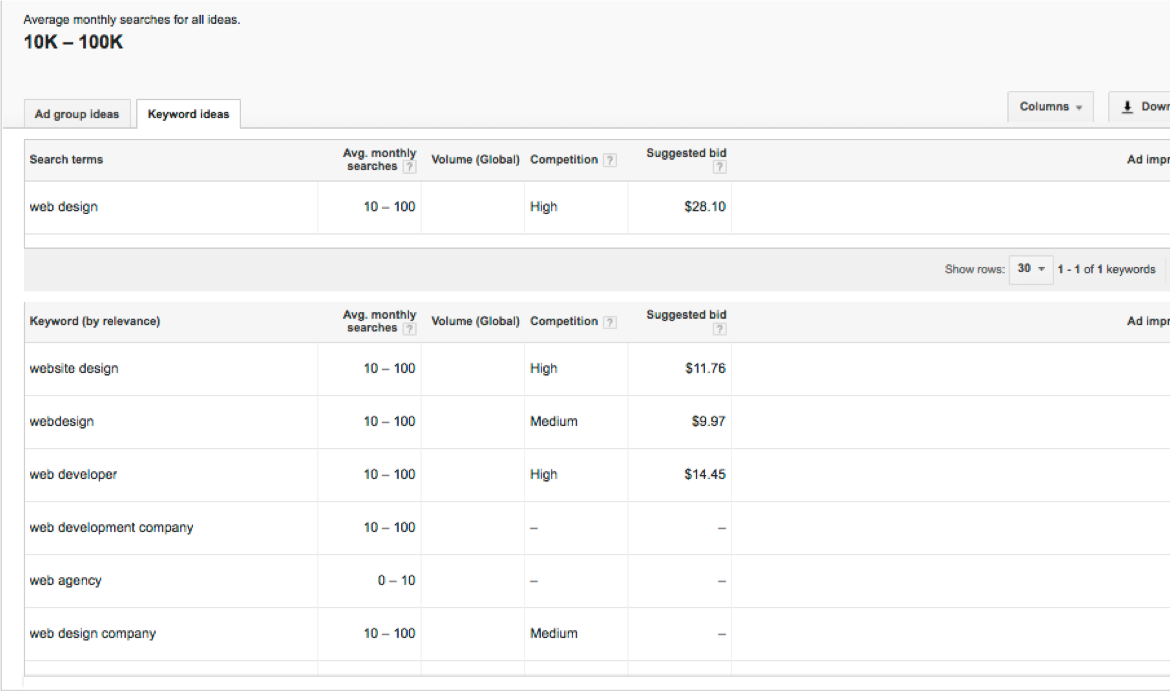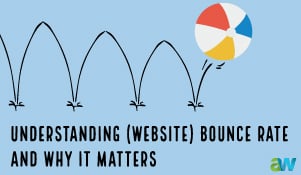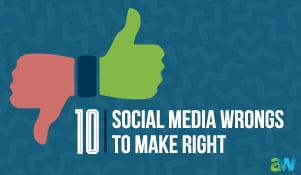I recently worked with a group of business owners who, for the most part, were already actively blogging for themselves or their companies but were ready to take their content to a higher level and, hopefully, see more return on their content. You may already do all or a few of these things, but I thought it was worthy of sharing some of these ideas with you in a post!
Editorial Calendars
Using an editorial calendar is a must for your blog and all of your other marketing content. Consider it your “road map” of where you want to go and how you want to get there. Below are some other benefits of an editorial calendar:
- It helps solve the "what should I write about" problem.
- It helps you balance your content.
- It helps you focus your content marketing efforts.
- It makes you consistent with publishing.
- It gets your team involved.
10 Key Elements of an Editorial Calendar
Yours may or may not have all of these, but definitely has the key ones.
1. Date the content will be published
2. Title or topic of each content piece
3. Author of piece (if applicable)
4. Social channels/platforms where piece will be published
5. Keywords, meta tags, and topic categories
6. URL (this is usually entered after the post is live)
7. Any call to action or follow up needed
8. Any important holidays, seasons, peaks in industry, etc.
9. Potential audience/buyer persona
10. Any significant events in your OWN business
Using a Mind Map to Brainstorm Topics
Whether you do this once a month, once a week, or once a year, a mind map is a great way to generate ideas for blog posts. If you're not familiar with mind mapping, you start with one general topic and then create "spokes" or bubbles of more specific topics and continue off the main topic until you have several that can be turned into blog posts. If you're struggling with where to start, I recommend that you look at your own website! What categories or pages are on there? Services or products that you offer? Here's an example using one of ours:
Marketing > Social Media > Facebook > Advertising > How to run ads on Facebook, Should I boost a post or run an ad?
And then we would continue to think of potential articles we could write that would fall under "advertising on Facebook." Mind mapping is a great tool for you and any of your team who contribute to brainstorm ideas!
Write STRONG Titles
“A click-worthy title has more value than a keyword-rich title.” Rand Fishkin
I agree with that quote 100%, and I've written about the power and necessity of strong titles before. Let's face it, people do judge a book by its cover and whether or not they're going to read an article based on the title. Here are some examples of great headline types:
1. New! Never-before-seen Insights into [your Job]
2. Exclusive Strategies from [a Sector Expert]
3. Ten Things you Need to Know in Order to Succeed
4. The Secret Trick to [Achieve a Goal]
5. How [Your Field] is Like…
6. How I [Did Something Unbelievable]
7. Are you Making this Mistake that’s [Leading to a Bad Result]?
8. How do you do [Activity]?
9. 10 Ways to [Improve in your Role]
Another tip is to use the free CoSchedule Headline Analyzer. I do not let a post go live until the title scores in the green. Take this post's title for example, it was the fourth one I tried—not the first.
Be Authentic
Friend and colleague, Gini Dietrich, gave me a great quote on being authentic and finding your own voice:
"The hardest part about blogging is putting yourself out there, but if you want to have success, it's a must. No one cares if you're Switzerland and don't want to cause any waves. What attracts people to successful bloggers is their stance or opinion on things. It doesn't have to be politically-driven to gain attention. Rather, begin to talk about your intellectual property, your process, your employees, or your culture. People love to see the "human" side of an organization and will be attracted to that kind of content. For example, when we started Spin Sucks, everyone in the organization wrote and there wasn't any editorial oversight. We tried to play fair and show both sides of an issue. It didn't work. What did work was when we started talking about things such as why professional speakers shouldn't wear jeans on stage or why you should never give your media list to a client. When you put yourself out there, you will turn off some prospective customers. For sure. But are those the people you want to work with anyway? I always consider blogging a great instigator of qualification. Those who will make great customers are attracted to your process, your culture, and your thinking." Gini Dietrich, CEO of Arment Dietrich and founder and author of Spin Sucks
As I told the group the day I taught, you are not going to write something that has never been written before, but you CAN write something that YOU'VE never written about before and in your own voice.
Use Long-Tail Keywords
Long-tail keywords are phrases that people use in searches that are very specific. Using them can increase traffic to your site as well as increase your conversion rate. They're also lower in competition level and comparatively low in search volume. For example, if you sell shoes, the competition would be very high if you just used the word "shoes." But, if you use keywords like "women's black sandals," it reduces the number of companies battling for the click! Most long-tail keywords consist of three or more words.
Use the Google Keyword Planner
“To take your blog from meh to wow, I highly recommend that you do keyword research! There are many tools available. One such tool I use and recommend is the Google Adwords keyword-planner tool. This tool lets you hone in to what people in your geographical area are searching for online, or what people are searching for within your industry. Using these keywords as a starting point for titling and writing your articles will give your SEO a boost which will drive more traffic to your blog.” Dorien Morin-van Dam – President of More In Media
In order to use the Google Keyword Planner, you'll need to have a Google AdWorlds account, but you don't have to actually place an ad. You'll want to enter words or phrases that describe your business, choose your location (optional), select your product category, and where you're targeting. Once you've entered that basic information, the planner will give you a list of keywords you could use and rank how competitive they are. They higher the competition, the less likely you are to rank on them. This is where the long-tail keywords we discussed earlier come into play!


You don't have to do all of these at one time to amp up your blog, just choose one or two at a time until you have them all in place. You should see a marked improvement in not only your skill set but in the traffic to your blog!









Leave a comment